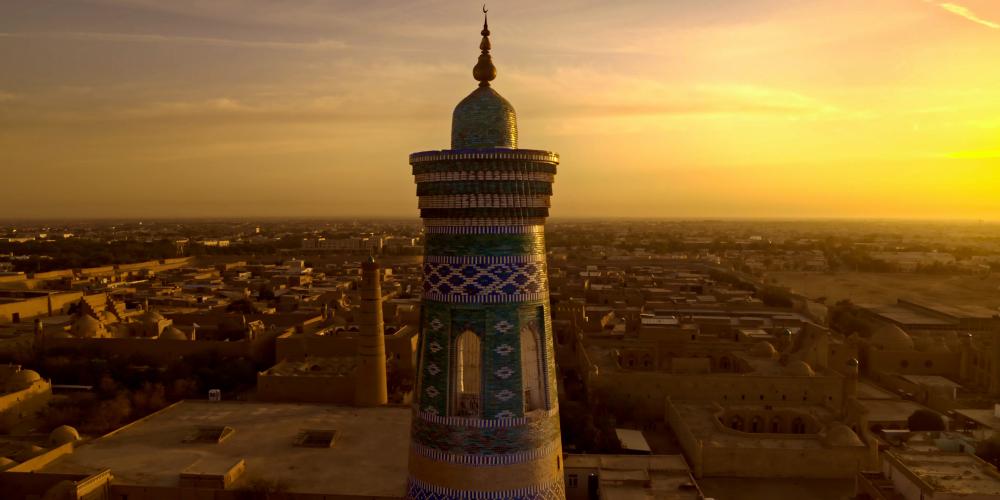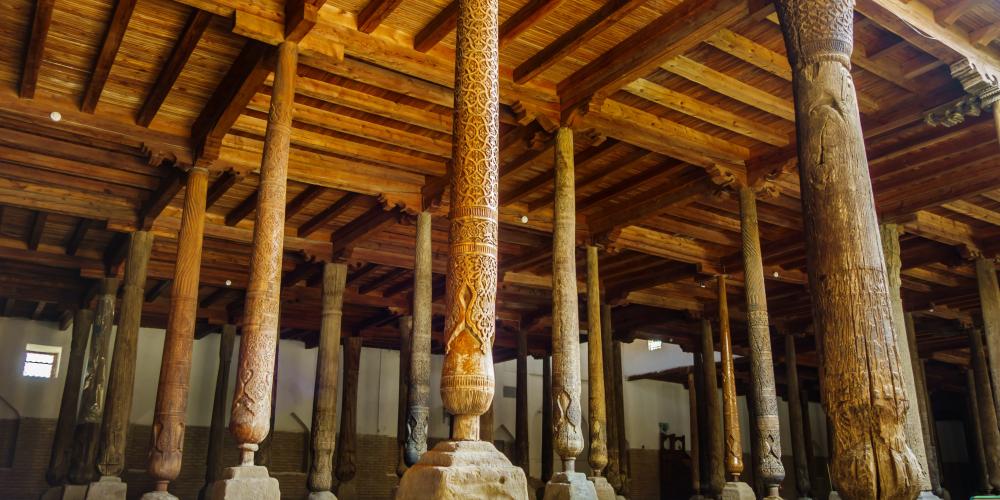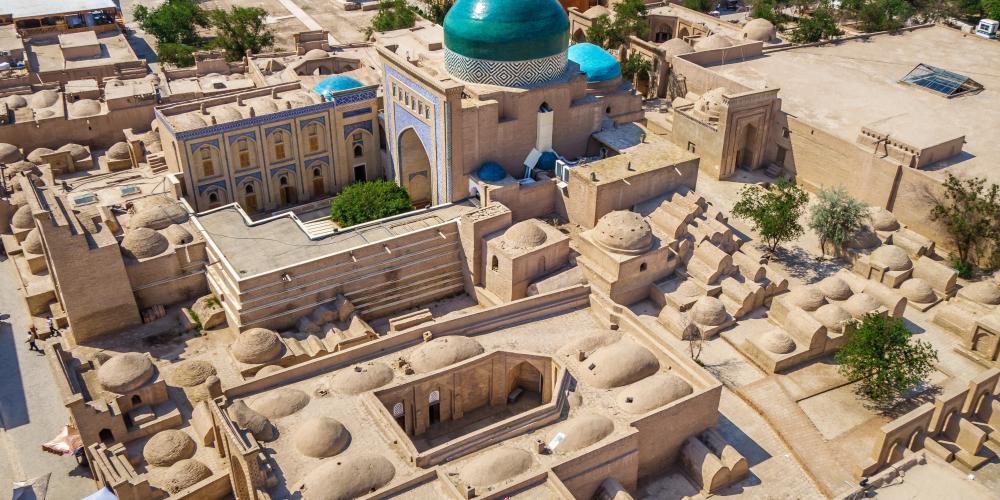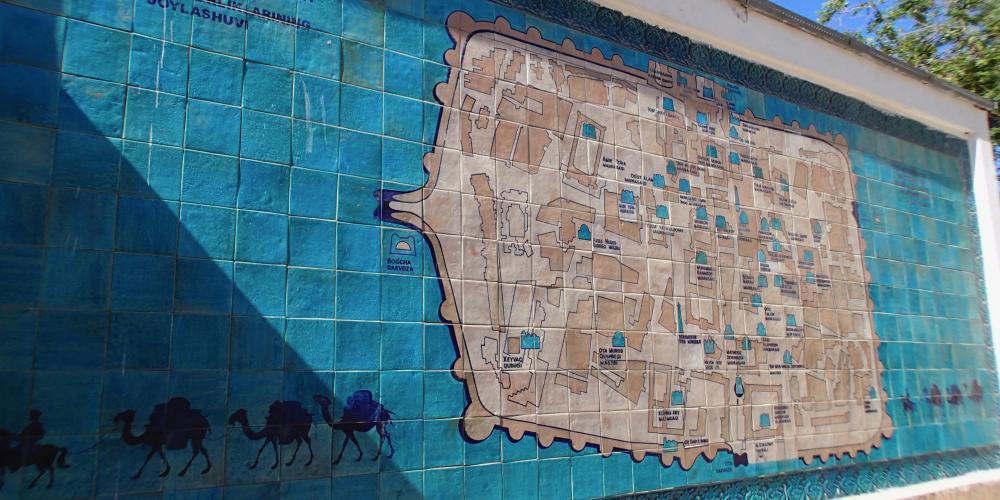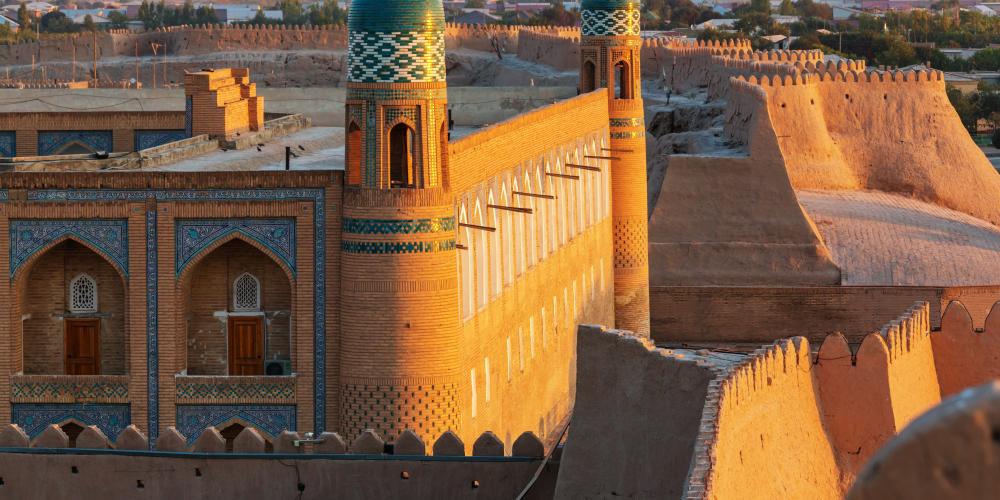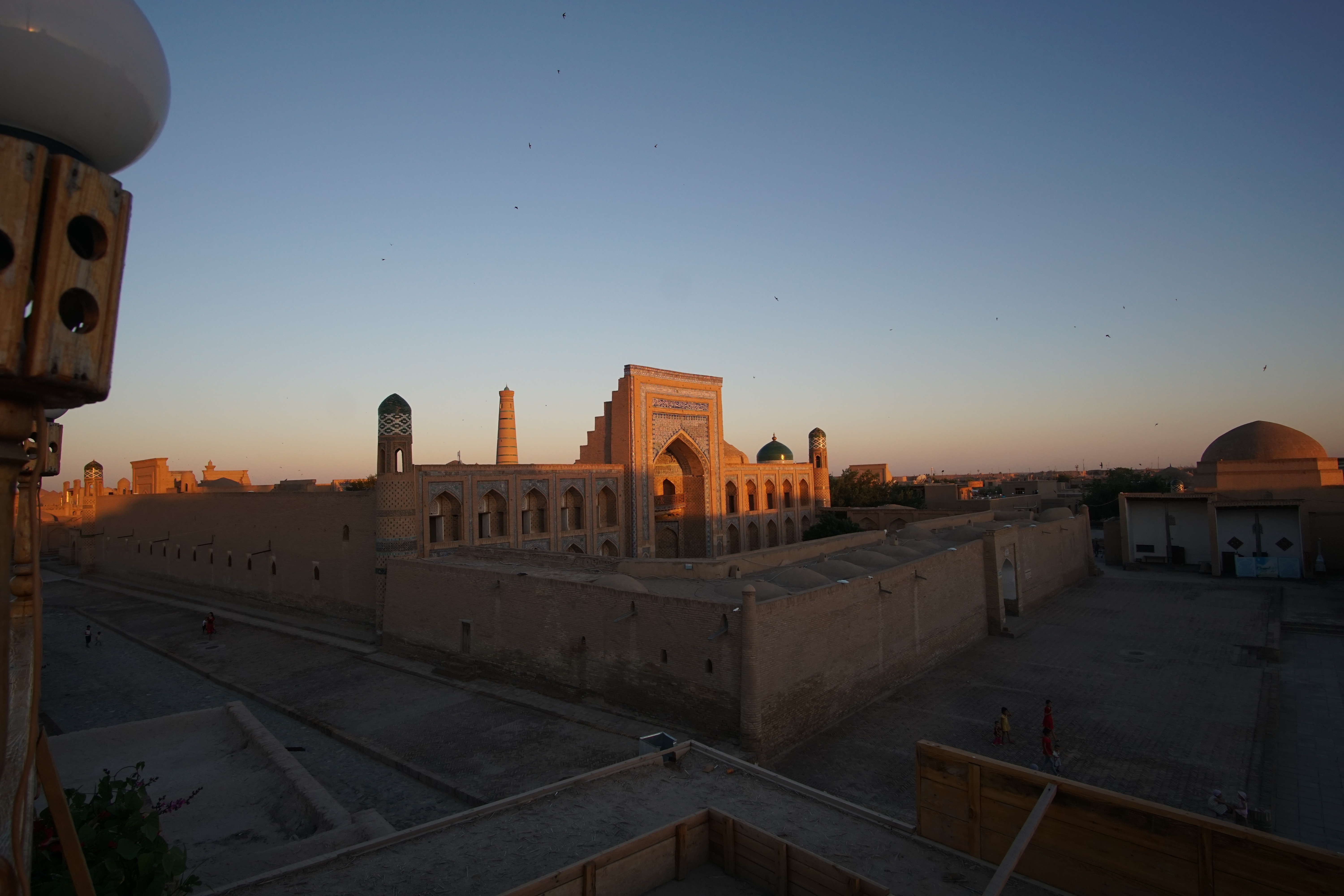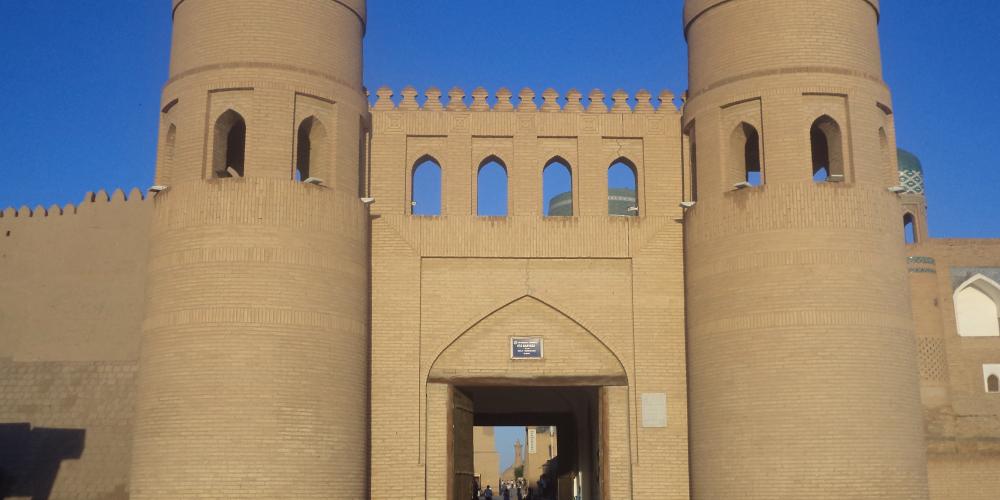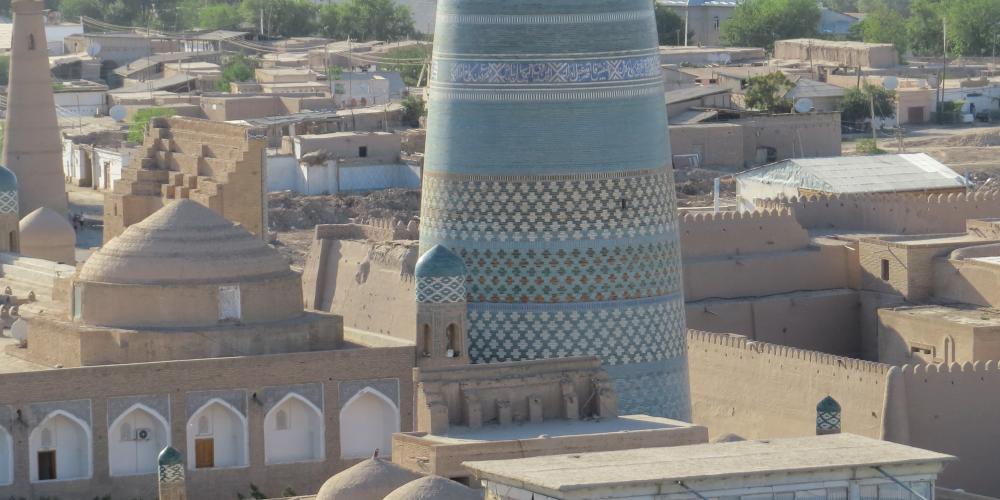Itchan Kala

The fortified walls of Itchan Kala within Khiva City is a traditional settlement along the Silk Road and is the ideal place to experience local Uzbek culture. The importance of Itchan Kala is not only attributed to its significance along the Silk Road but to its architectural heritage as well. The abundance of traditional monuments encapsulates the progression of Islamic architecture. With a history spanning two millennia, the city is home to many well-preserved historical structures and, whilst the majority date back to the 19th century, they remain some of the best protected and authentic buildings in Central Asia.

Being one of the most remote locations along the Silk Road, Khiva acted as the final resting spot for caravans travelling west before they embarked on a journey through the vast desert. The inner city is surrounded by a nine-metre-high rectangular wall that stretches 2.5 kilometres around the perimeter. Entry into the medieval city is through four gates topped by blue tiled domes, each positioned at the cardinal points of the city.
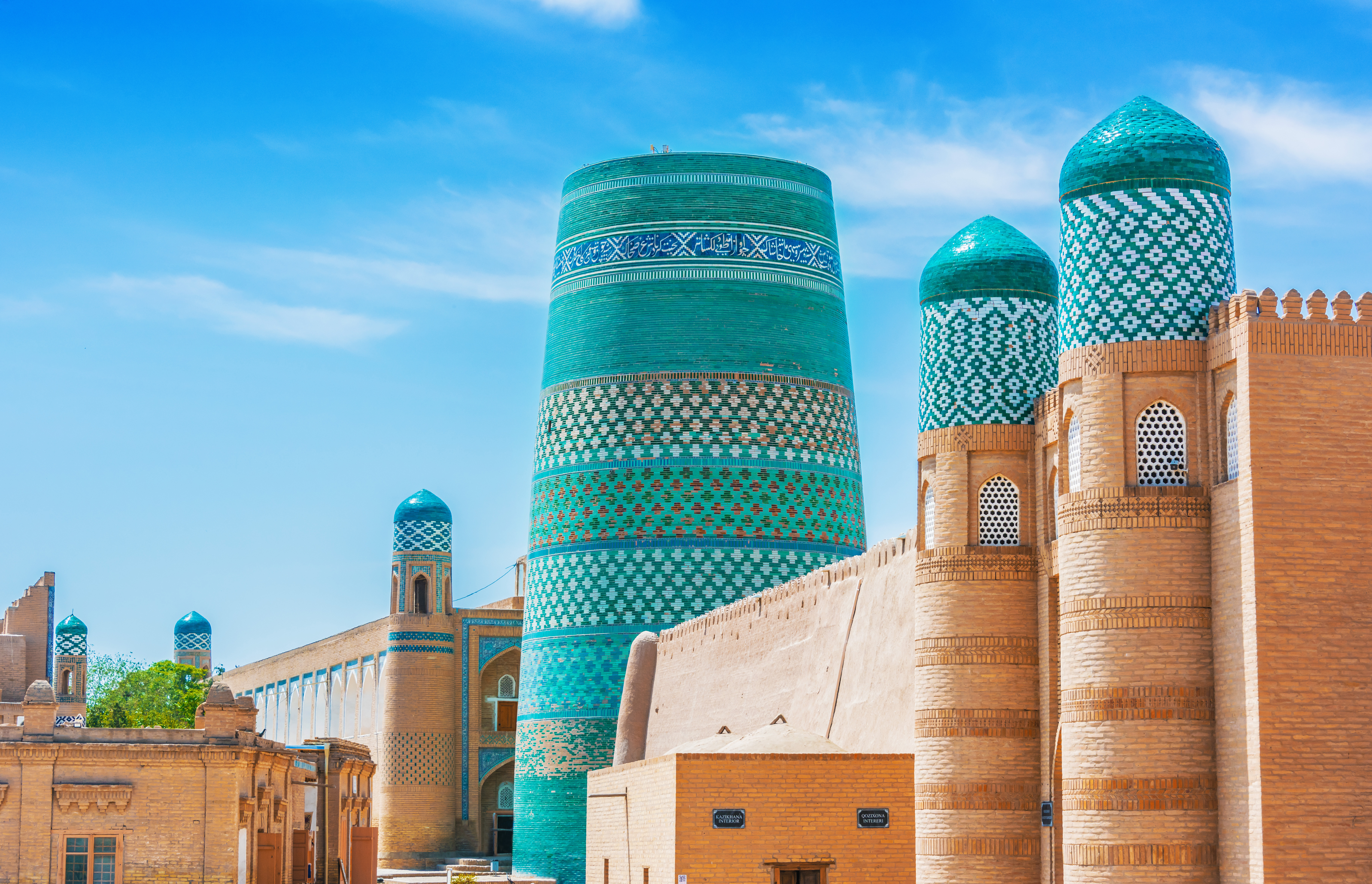
History and today:
The multifaceted history of the city spans across many rulers and many centuries. Situated 650 kilometres from Tashkent, the site's secluded nature meant it became a crossroads and consequently changed hands multiple times throughout its vast history. The city was briefly under Genghis Khan’s ruling in the 13th century before falling to the Empire of Timur in the late 1300s. In the 16th century, the city became the capital of the Khanate of Khiva and was ruled by direct descendants of Genghis Khan. It remained the capital until the 1900s.
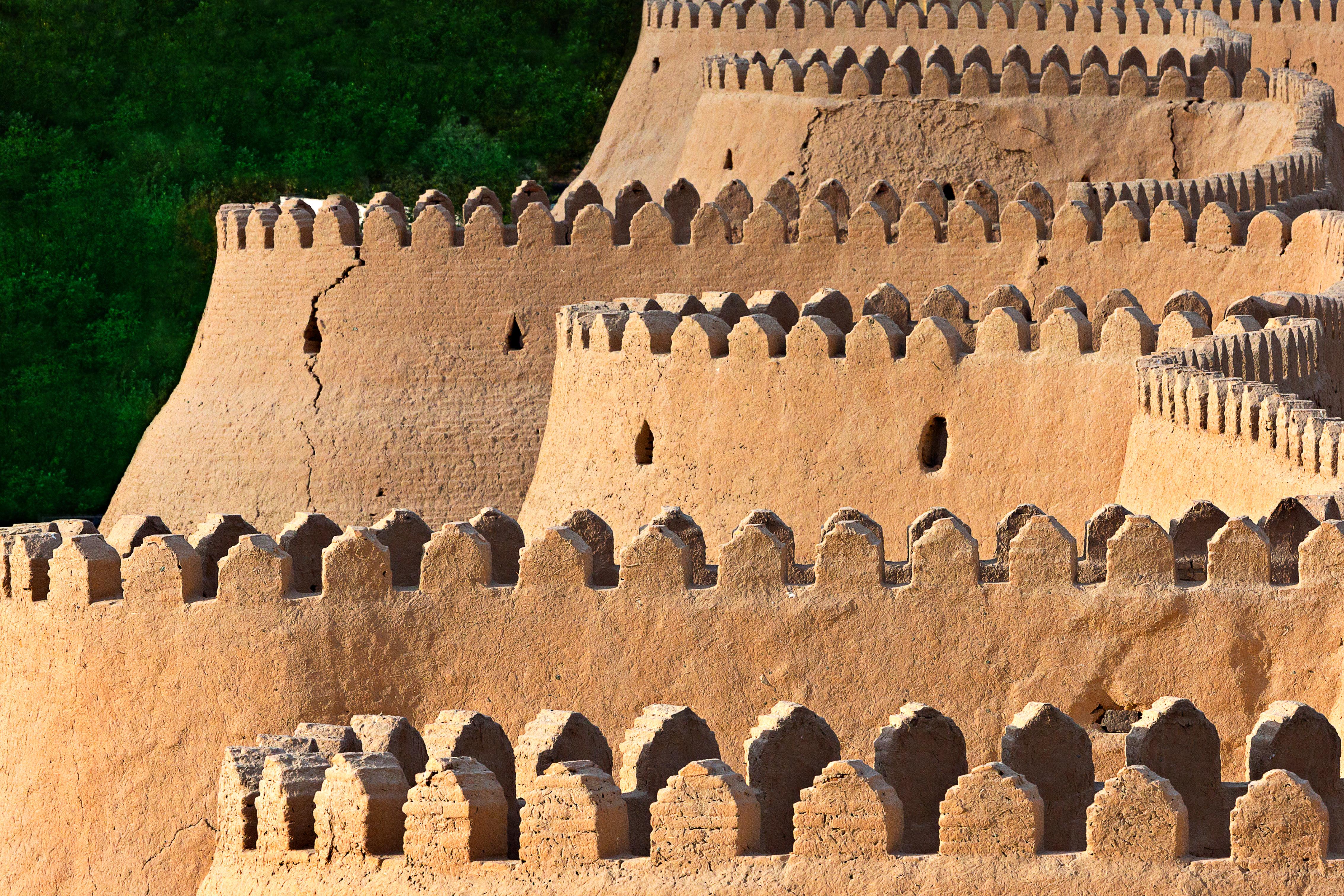
Its isolated location enabled the development of a darker past and the introduction of the slave trade to the city. Persian slaves were brought, bartered for, and sold all within the walls of Itchan Kala. The introduction of Russian slaves into the city marked the beginning of the end of Itchan Kala as a crossroads on the Silk Road and the Khanate of Khiva. It brought an inevitable reaction from the Russian Empire and in 1873 fell to them after a brief siege. Sanctions were introduced into the city from this point and its importance as a base became obsolete. Yet the beauty of the city was unmatched and as such was preserved in its traditional state.
To this day, Khiva's Itchan Kala remains a traditional settlement along the Silk Road and is the ideal place to experience local culture.The Western gate (Ata Darvaza) is the most popular entrance to the city and here you will find a bustling marketplace filled with traditional items. The city has become known as a living museum, the buildings holding their original authenticity with any refurbishments using locally sourced materials to ensure traditional construction techniques remained in place. It has even been said the city was the inspiration behind the city of Agrabah in the original Aladdin film.
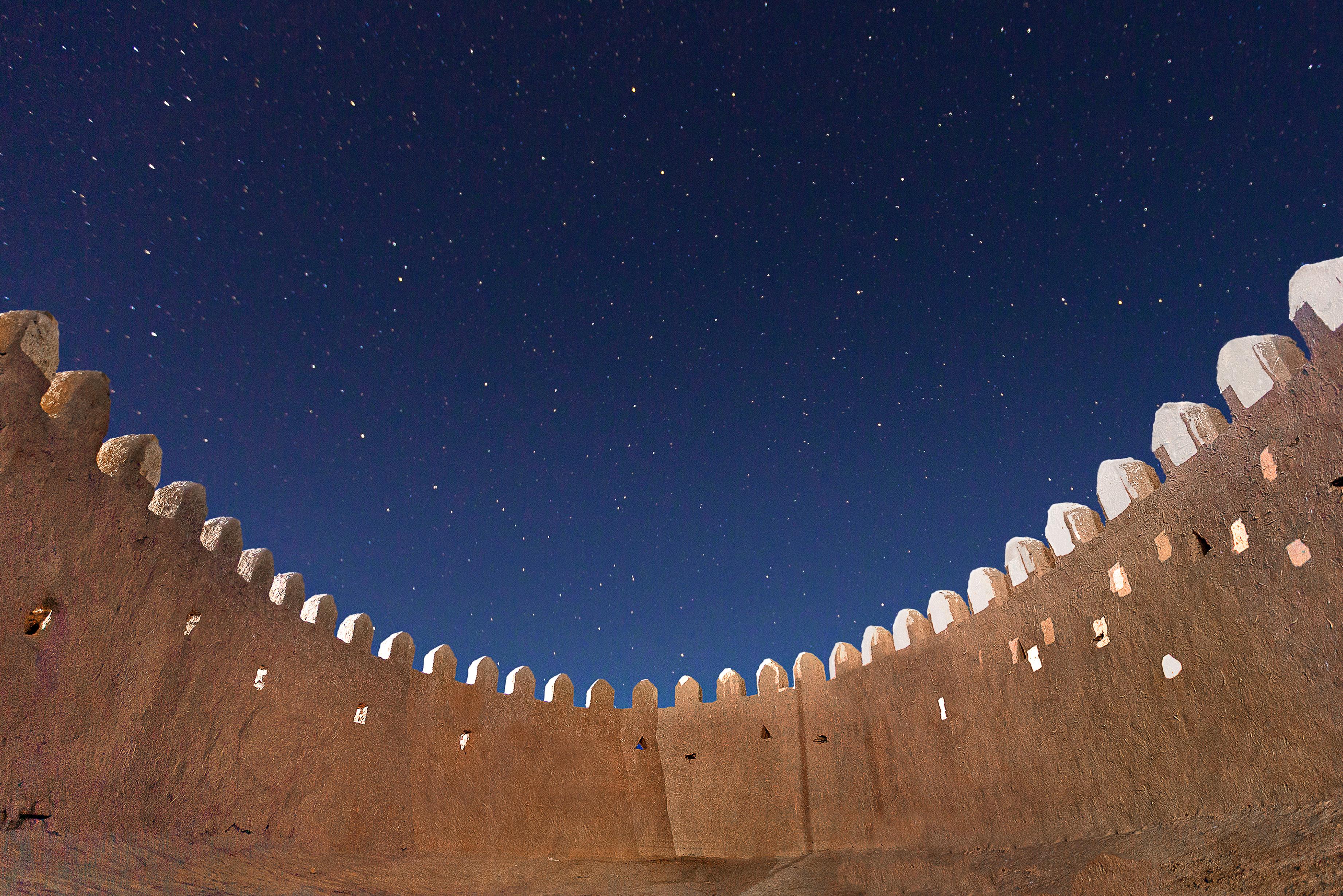
How to get there
One of the best ways to get to Itchan Kala is by train. You can use a travel agent in Tashkent to get all the train tickets, or you can do it yourself. The train runs every other day and costs around $20 but as it's a sleeper saves on a hotel. You need a train ride to Bukhara and then a bus or car ride to Itchan Kala.
Taking a car is also an option. The road is almost 8 hours from Bukhara to Khiva.

How to Visit
You can walk around the Old City within the walls free of charge. If you wish to visit any of the monuments such as madrassahs or mausoleums, you will find a turnstile at each entrance. For this you need a ticket that can only be bought from the entrance at the main gate. The ticket costs around 160,000 som which gives admission everywhere. If you enter the eastern gate you can walk freely around, without a ticket, but you can't enter the museums. Everything is open all day till usually at 17.00 - 18.00.
Note: You are not charged if you take photos of camels - only if you want to take a picture of yourself with the camels.
Strolling through the alleys and out into the squares of Itchan Kala leads you through an open-air gallery of some of Central Asia's best historic Islamic architecture. Visit the Kalta Minor Minaret, which is hard to miss with its bright turquoise appearance against the backdrop of the numerous sand coloured mudbrick buildings. Venture over to the eastern gate (Palawan Darwaza) to discover a darker side to the city's past in the caravanserai where slaves were held and traded. And take in Kanya Ark, the rulers of Khiva’s residence and citadel, with its unique blue-tiled walls and carved wooden beams. At the top of the steps of the watchtower, you'll experience a breathtaking sunset over the city of Khiva and sprawling desert as the setting sun casts a golden shine over the mudbrick outer walls.
Sights and Attractions recommended by the locals
Itchan Kala
Like much of Uzbekistan, the best time to visit Itchan Kala is in the spring and autumn season. Traveling in winter is not so much recommended due to the weather conditions.
